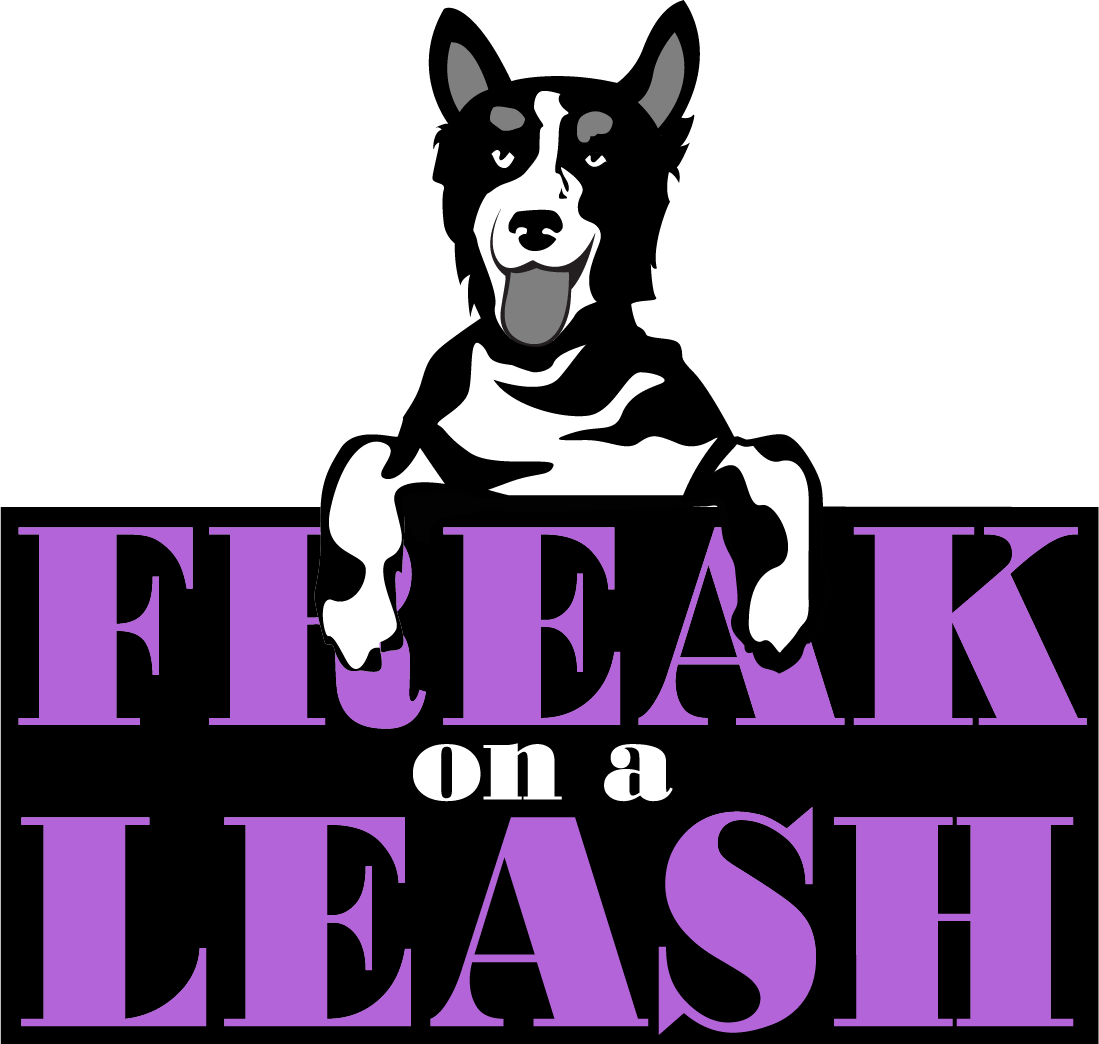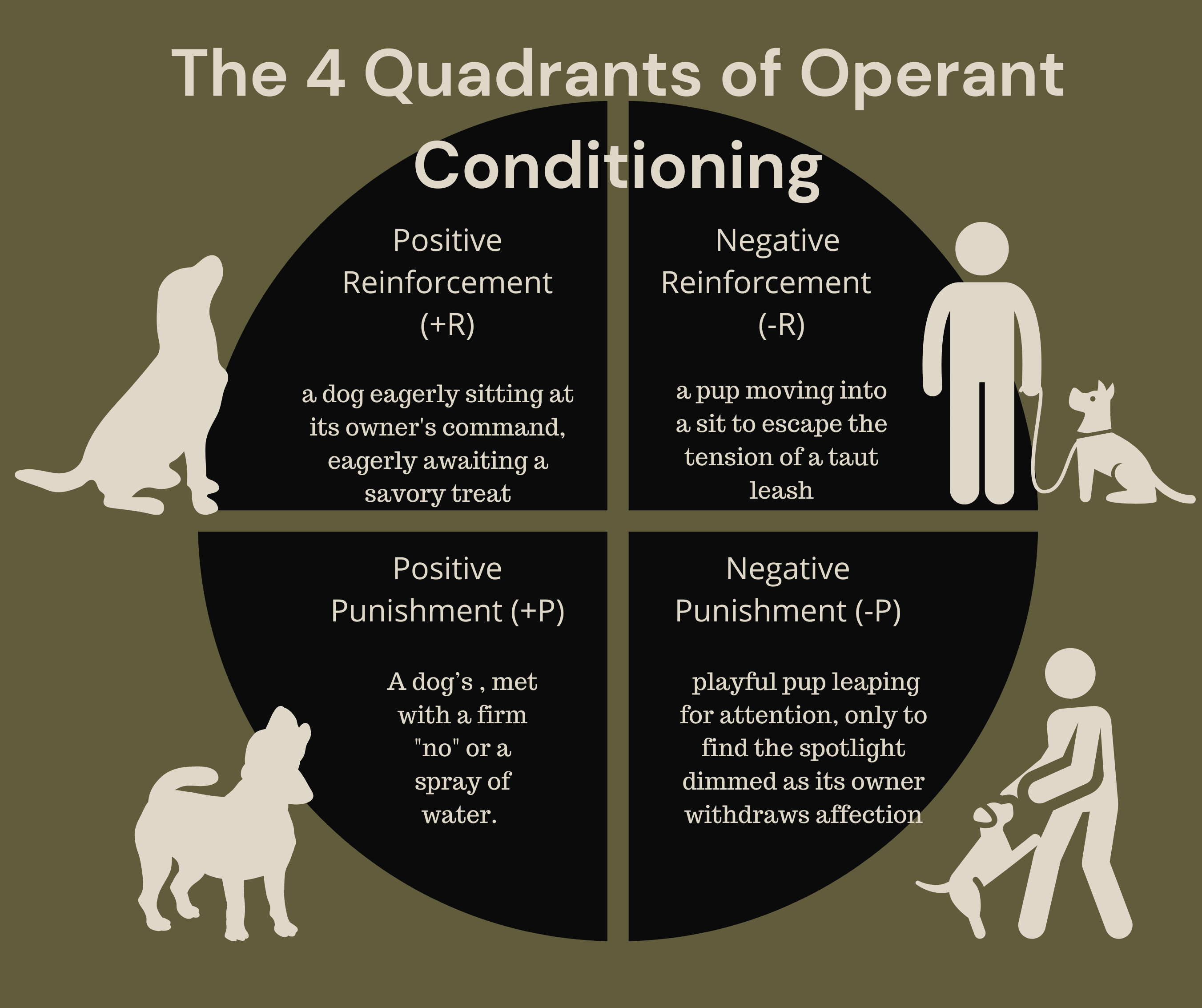 Introduction
Introduction
Training a dog is not just about teaching basic commands; it is about building a strong bond and effective communication between dog and human. Whether you have a new puppy or an adult dog, it is never too late to start training. This guide will provide you with the basic principles of effective dog training and help you understand what dog trainers mean when they use terms like positive reinforcement or negative punishment.
Positive reinforcement is a highly effective and humane method of training dogs. It involves rewarding desired behaviors rather than punishing unwanted ones. This approach not only encourages good behavior but also strengthens the relationship between you and your dog. Teaching the basics of obedience, including skills such as sit, stay, come, and polite leash manners is essential to having a well-behaved dog.
Socialization is another key aspect of a well behaved dog, and should not be overlooked. This involves exposing your dog to different environments, people, and animals to ensure they are comfortable and well-behaved in various situations. Addressing behavioral issues such as barking, chewing, and aggression requires patience, consistency, and sometimes the help of a professional dog trainer.
Understanding Dog Psychology and Behavior
In order to effectively train a dog, it is important to understand canine psychology and behavior. Dogs are highly social animals with a natural instinct to form strong bonds with their human companions. They communicate through body language, vocalizations, and facial expressions. In order to establish clear communication with your dog, it is important to learn how to interpret their cues and signals. These cues can be subtle, but will help you understand your dog’s needs, desires, and emotions, allowing for a more effective and positive training experience. By understanding dog psychology and behavior, you will create a strong foundation for training based on mutual trust and respect.
The Basics of Canine Cognition
Canine cognition refers to the mental processes and abilities of dogs. It includes their learning, problem-solving, memory, and decision-making skills. Mental stimulation is essential for keeping dogs engaged and preventing boredom, which can lead to destructive behaviors. Dogs have a remarkable capacity to learn and understand commands. Like all animals (and humans!), dogs respond best to positive reinforcement. Rewards such as treats, praise, and play, encourage dogs to repeat desired behaviors. By understanding the basics of canine cognition and operant conditioning, you can tailor your training methods to suit your dog’s individual needs and abilities.
How Dogs Learn: Operant Conditioning and Reinforcement
Dogs learn through a process called operant conditioning, a theory developed by B.F. Skinner. Operant conditioning involves associating a specific action with a consequence. Positive reinforcement is an effective and preferential method of conditioning, where desired behaviors are reinforced with praise, treats, or play. This encourages dogs to repeat those behaviors in the future. A professional trainer can guide you in using positive reinforcement effectively and will help you understand the importance of consistency and clear communication in the training process. By using the principles of conditioning and reinforcement, you can create a positive learning environment for your dog and achieve your desired training goals.
The Essentials of Positive Reinforcement Training
As discussed, positive reinforcement training is a method that focuses on using treats, praise, or play to reinforce desired behaviors. In this process, professional dog trainers often use clicker training, where a clicker is used to mark the desired behavior, followed by the reward. This method helps dogs understand exactly which behavior is being reinforced. Positive reinforcement training is effective, humane, and builds a strong bond between you and your dog. Working with a professional dog trainer can provide you with the guidance and expertise needed to implement positive reinforcement training effectively. It is important to know that just because someone is using food during training doesn’t necessarily mean they are using positive reinforcement.
What is Positive Reinforcement?
Positive reinforcement is a method that rewards desired behaviors to encourage their repetition. This can be done using any reward that motivates your dog. The key is to reinforce the behavior immediately after it occurs, so the dog associates the reward with the specific action. Positive reinforcement teaches dogs to make positive associations and helps them understand what you expect from them. It is a gentle and effective method that builds trust and strengthens the bond between you and your dog. Training classes are a great way to learn how to use positive reinforcement effectively and get expert guidance on properly using these techniques.
Why Positive Reinforcement is More Effective
Positive reinforcement is more effective than other training methods because it focuses on rewarding desired behaviors instead of punishing unwanted ones. This approach encourages dogs to repeat behaviors that are associated with rewards, creating a positive learning experience. When a behavior increases after adding a reward/reinforcer you are using positive reinforcement. Punishment-based methods often create fear and anxiety in dogs, which hinders their ability to learn and trust their owners. Positive reinforcement training develops clear communication between you and your dog, allowing for a deeper understanding and connection. Consistency is also key in positive reinforcement training. By consistently rewarding desired behaviors and ignoring or redirecting unwanted behaviors, you set clear expectations for your dog and reinforce good habits. This leads to faster and longer lasting results in training.
What is Positive Punishment
Positive punishment as it relates to dog training involves adding an aversive consequence to stop or deter an unwanted behavior. The goal of positive punishment is to reduce the likelihood of a behavior by use of an unpleasant outcome. Adding an outcome that the dog tries to avoid can reduce the behavior that you are trying to extinguish, but this sounds easier than it may be in reality. Timing has to be perfect using this method, and you need to be aware that your dog might not understand the relation between his behavior and your consequence. For example, jerking on the dog’s lead when he pulls towards another dog in excitement might teach the dog not to pull, but it might also teach him that seeing other dogs is associated with discomfort. Your dog might become anxious when another dog approaches, or engage in an aggressive display to avoid the other dog coming closer. Using positive punishment as a main strategy in training can negatively impact your relationship with your dog, as well as add anxiety and unpredictability into your dog’s experiences with you.
Why Positive Punishment Works
Positive punishment works by presenting an aversive consequence to decrease the likelihood of an unwanted behavior. When a consequence is unpleasant, such as a sharp sound or leash pop, the dog learns to avoid that behavior. However, it’s essential to use positive punishment judiciously, as it can lead to fear or anxiety in dogs if overused.
The Fallouts of Positive Punishment
Positive punishment in dog training can have adverse effects on your canine friend. Punishment techniques like yelling or physical corrections can lead to fear, anxiety, and even aggression in dogs. This approach may damage the bond you’ve built with your pet and cause your dog to associate training with negative experiences. Additionally, positive punishment may not effectively address the root cause of a behavior problem, as it often results in temporary suppression of a behavior rather than long-term behavior modification. It is critical to consider these consequences when deciding on training methods.
What is Negative Reinforcement
Negative reinforcement in dog training involves the removal of something aversive to the dog to increase the likelihood of a particular behavior recurring. The goal of this method is to increase a desired behavior by removing something unpleasant when the behavior is displayed. Unlike punishment, negative reinforcement focuses on the cessation of something the dog finds unfavorable rather than its application.
How Negative Reinforcement works
In negative reinforcement, something that the dog finds aversive is discontinued when the dog responds correctly to a cue or command, encouraging the dog to repeat the action on cue to avoid discomfort. This method focuses on creating an association between the removal of an unpleasant stimulus and the desired behavior, requiring precise timing and consistent application for results. For example, the use of an e-collar involves the application of electric stimulation until the dog complies with a command in order to avoid discomfort.
What is Negative Punishment
The concept of negative punishment involves the removal of something desirable to decrease the likelihood of unwanted behaviors recurring. It operates by taking away something pleasant when an unwanted behavior is exhibited. This method seeks to reduce the frequency of an undesired behavior by associating it with the removal of something that is desired by the dog.

Explanation and Examples of the 4 Quadrants of Operant Conditioning
- Positive Reinforcement (+R): This involves adding something desirable to increase the likelihood of a behavior occurring again. For instance, when a dog sits on command and receives a treat as a reward, the treat serves as positive reinforcement. The addition of the treat strengthens the association between sitting and receiving a reward, making the dog more likely to repeat the behavior in the future.
- Negative Punishment (-P): Negative punishment entails removing something desirable or delaying gratification to decrease the probability of a behavior. An example in dog training is when a dog jumps on people for attention, and the owner ignores the dog until it stops jumping. By withholding attention, the owner removes a desirable stimulus, decreasing the likelihood of the dog jumping in the future.
- Positive Punishment (+P): This quadrant involves adding an aversive stimulus to decrease the likelihood of a behavior occurring again. For instance, if a dog barks excessively, and the owner uses a sharp “no” or a squirt of water to stop the barking, these actions serve as positive punishment. The addition of an unpleasant consequence discourages the dog from repeating the behavior.
- Negative Reinforcement (-R): Negative reinforcement involves removing an aversive stimulus to increase the likelihood of a behavior occurring again. For example, if a dog learns to sit to avoid the discomfort of a tight leash pulling on its collar, the relief from leash pressure serves as negative reinforcement. By sitting, the dog removes the aversive stimulus (tight leash), reinforcing the behavior of sitting in similar situations in the future.
Conclusion
Training dogs and engaging in behavior modification involves a comprehensive understanding of various sciences such as learning theory, ethology, and other behavior sciences. Training professionals utilize operant conditioning to shape behaviors. Positive reinforcement utilizes the addition of desirable elements to reinforce desired behaviors, while negative punishment involves removing favorable elements or stimuli to decrease undesired behaviors. Conversely, positive punishment adds aversive elements/stimuli to discourage behaviors, and negative reinforcement entails removing adverse elements/stimuli to promote desired behaviors. Trainers employing force or pain may achieve quick results but risk damaging the human-canine bond and causing undue stress. Conversely, trainers focusing on positive reinforcement cultivate a strong bond, promote problem-solving, and ethically ensure the dog’s well-being. Understanding the four quadrants of operant conditioning aids in the implementation effective training strategies.
Frequently Asked Questions
Can Old Dogs Learn New Tricks?
Old dogs can indeed learn new tricks! While it may take longer due to established habits, with patience and positive reinforcement, older dogs can adapt and learn just as well as younger ones. Age should not limit a dog’s ability to learn and grow.

